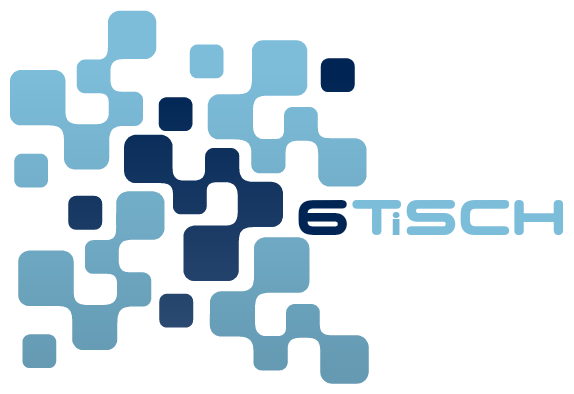6TiSCH protocol
Published:
 The 6TiSCH protocol is a popular networking protocol that is specifically tailored to low-power and low-rate wireless networks. This protocol has been designed to facilitate the development of wireless networks for IoT applications. This protocol is based on the IEEE 802.15.4e standard, which is a wireless standard that operates on low-rate wireless personal area networks. The standardization of 6TiSCH ensures that developers can leverage and extend the technology to develop interoperable devices and applications, which will ultimately drive innovation in the IoT space.
The 6TiSCH protocol is a popular networking protocol that is specifically tailored to low-power and low-rate wireless networks. This protocol has been designed to facilitate the development of wireless networks for IoT applications. This protocol is based on the IEEE 802.15.4e standard, which is a wireless standard that operates on low-rate wireless personal area networks. The standardization of 6TiSCH ensures that developers can leverage and extend the technology to develop interoperable devices and applications, which will ultimately drive innovation in the IoT space.
What is the 6TiSCH protocol?
The 6TiSCH protocol is designed to provide a reliable and secure communication layer for IoT devices that need to communicate with each other and with the wider Internet. It is particularly well-suited for use in industrial, agricultural, and other environments where low-power, low-bandwidth communication is required.
One of the key features of the 6TiSCH protocol is its support for time-slotted channel hopping (TSCH), which allows devices to communicate with each other over a series of predefined radio channels in a coordinated manner. This helps to improve the reliability and efficiency of the communication, as it allows devices to avoid interference and collision with other devices that may be transmitting on the same channel.
Another important feature of the 6TiSCH protocol is its support for IPv6, the latest version of the Internet Protocol (IP). This allows devices that use the 6TiSCH protocol to communicate directly with each other and with the wider Internet using standard IP addresses, enabling seamless integration with the existing Internet infrastructure.
Overall, the 6TiSCH protocol is an important enabling technology for the IoT, providing a reliable and secure communication layer for low-power, low-rate wireless devices. It is expected to play a key role in the development and deployment of IoT applications in a wide range of domains.
How does the 6TiSCH protocol work?
At a high level, the protocol consists of three main components: the physical layer, the link layer, and the network layer.
The physical layer is responsible for the transmission and reception of radio signals between devices. It uses the 2.4 GHz ISM band, which is a globally available frequency band that is commonly used for IoT and other low-rate wireless applications. The physical layer uses a number of different modulation and coding schemes to optimize the transmission of data over the air, depending on the specific requirements of the application.
The link layer is responsible for the coordination of communication between devices, and includes the time-slotted channel hopping (TSCH) feature that is one of the key features of the 6TiSCH protocol. TSCH allows devices to communicate with each other over a series of predefined radio channels in a coordinated manner, improving the reliability and efficiency of the communication. The link layer also includes features such as error correction and security, to ensure the integrity and confidentiality of the communication.
The network layer is responsible for routing data between devices and the wider Internet. It uses IPv6, the latest version of the Internet Protocol (IP), which allows devices that use the 6TiSCH protocol to communicate directly with each other and with the wider Internet using standard IP addresses. The network layer also includes features such as multicasting and addressing, which allow devices to communicate with groups of other devices or with specific devices using logical addresses.
What are the benefits of the 6TiSCH protocol?
One of the key benefits of the 6TiSCH protocol is its low power consumption. The protocol is designed to be energy efficient, allowing devices that use it to operate for long periods of time on a single battery or other power source. This is particularly important for IoT applications, where devices may need to operate for extended periods of time in remote or hard-to-reach locations.
Another benefit of the 6TiSCH protocol is its security features. The protocol includes a number of mechanisms to ensure the confidentiality and integrity of the communication, including encryption, authentication, and error correction. This is important for ensuring the security of IoT applications, particularly in domains where data confidentiality and integrity are critical.
The 6TiSCH protocol also has a number of features that make it well-suited for use in industrial and other environments where low-rate wireless communication is required. These features include the time-slotted channel hopping (TSCH) feature, which allows devices to communicate with each other over a series of predefined radio channels in a coordinated manner, improving the reliability and efficiency of the communication.
What are the challenges and limitations of the 6TiSCH protocol?
One challenge of the 6TiSCH protocol is its complexity. The protocol is based on the IEEE 802.15.4e standard, which is a complex and technical specification that requires a certain level of expertise to understand and implement. This can make it difficult for non-technical users to get started with the protocol, and may require the use of specialized tools and resources to develop and deploy applications that use the protocol.
Another challenge of the 6TiSCH protocol is its limited range. The protocol is designed for use in low-rate wireless networks, and as such has a relatively limited range compared to other wireless technologies such as Wi-Fi or cellular. This can be a challenge for applications that require longer-range communication, and may require the use of additional infrastructure such as repeaters or gateways to extend the range of the network.
The 6TiSCH protocol is also subject to interference and other environmental factors that can affect the reliability of the communication. These factors can include interference from other wireless devices, physical obstructions such as walls or trees, and changes in the physical environment such as temperature or humidity. These factors can impact the performance of the protocol and may require additional measures to ensure the reliability of the communication.
What are some examples of the use of the 6TiSCH protocol?
Some examples of the use of the protocol include:
Industrial automation: The 6TiSCH protocol is used in a wide range of industrial automation applications, such as the control and monitoring of manufacturing processes, the maintenance of equipment and assets, and the management of supply chains.
Agriculture: The 6TiSCH protocol is used in agricultural applications such as precision farming, where it is used to monitor and control irrigation systems, soil moisture sensors, and other sensors and devices.
Environmental monitoring: The 6TiSCH protocol is used in environmental monitoring applications such as the tracking of air and water quality, the monitoring of wildlife populations, and the measurement of meteorological parameters such as temperature and humidity.
Smart cities: The 6TiSCH protocol is used in smart city applications such as the management of public transportation systems, the monitoring of traffic and transportation infrastructure, and the management of public utilities such as water and electricity.
Healthcare: The 6TiSCH protocol is used in healthcare applications such as the monitoring of patients, the management of medical devices, and the tracking of medication and other healthcare supplies.

 The year 2023 was full of various experiences for me. I took on the role of an Assistant Professor, and the journey had unexpected events like a major surgery, health issues within my family, starting a website, and picking up new hobbies. This post gives an honest overview of the good and bad moments that shaped my year. The foundation of everything in life is undoubtedly health. Without it, even the biggest achievements and detailed plans can fall apart. Health quietly influences our daily activities, professional goals, and personal relationships.
The year 2023 was full of various experiences for me. I took on the role of an Assistant Professor, and the journey had unexpected events like a major surgery, health issues within my family, starting a website, and picking up new hobbies. This post gives an honest overview of the good and bad moments that shaped my year. The foundation of everything in life is undoubtedly health. Without it, even the biggest achievements and detailed plans can fall apart. Health quietly influences our daily activities, professional goals, and personal relationships.  Ever wondered who the superheroes of the Java world are? Java Champions are like the rock stars of Java programming. They’re not just good; they’re exceptional! These are people who have shown their love for Java in outstanding ways. Java Champions are recognized as elite members of the Java community who have made significant contributions in various ways. Unlike certifications or titles that are earned through formal channels, becoming a Java Champion is an acknowledgment of a person’s ongoing and sustained efforts in the Java ecosystem.
Ever wondered who the superheroes of the Java world are? Java Champions are like the rock stars of Java programming. They’re not just good; they’re exceptional! These are people who have shown their love for Java in outstanding ways. Java Champions are recognized as elite members of the Java community who have made significant contributions in various ways. Unlike certifications or titles that are earned through formal channels, becoming a Java Champion is an acknowledgment of a person’s ongoing and sustained efforts in the Java ecosystem.  On November 24th, we observe Teachers’ Day in Turkey, a day that holds great importance and emphasizes the crucial role of education in our society. Mustafa Kemal Atatürk, a military leader and statesman, understood how education could profoundly shape a nation’s destiny. He believed that the progress and prosperity of a society were closely tied to the quality of its education system. Atatürk firmly believed that a well-educated and enlightened citizenry was the cornerstone for building a modern, democratic, and forward-thinking nation.
On November 24th, we observe Teachers’ Day in Turkey, a day that holds great importance and emphasizes the crucial role of education in our society. Mustafa Kemal Atatürk, a military leader and statesman, understood how education could profoundly shape a nation’s destiny. He believed that the progress and prosperity of a society were closely tied to the quality of its education system. Atatürk firmly believed that a well-educated and enlightened citizenry was the cornerstone for building a modern, democratic, and forward-thinking nation.